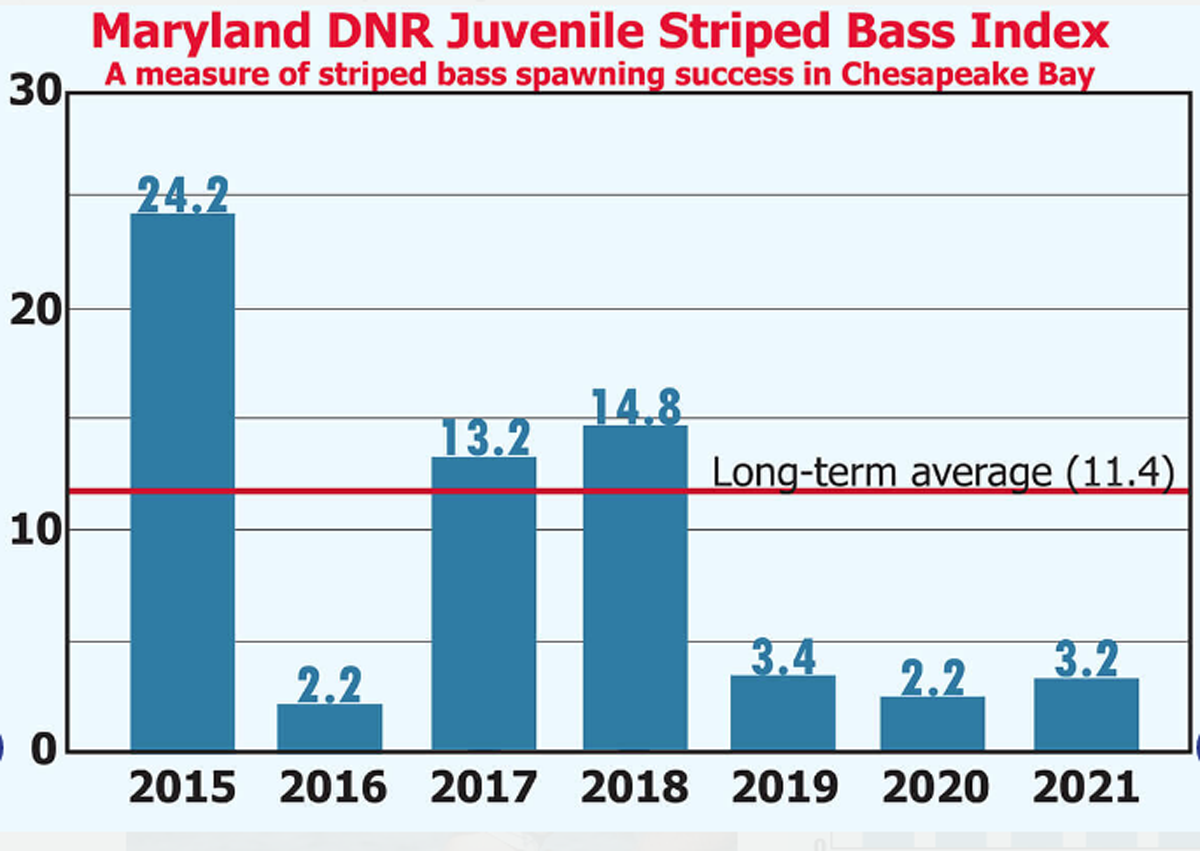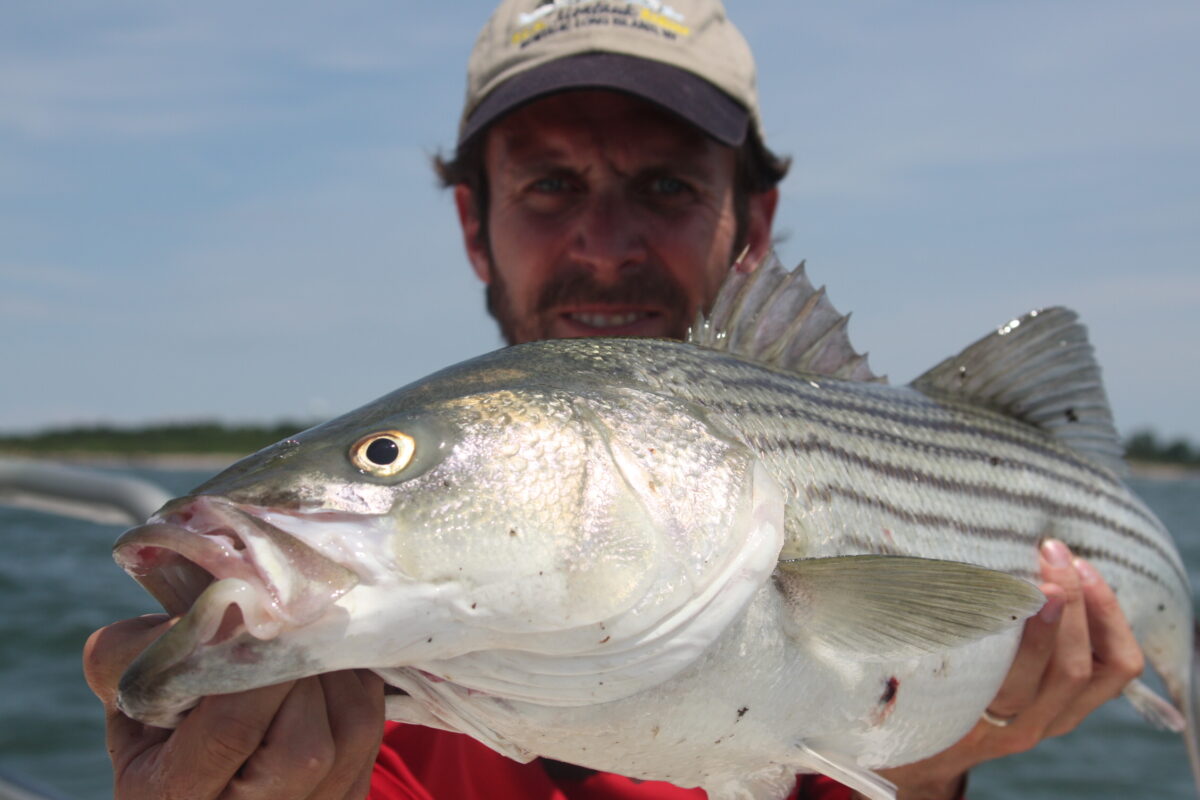 Atlantic Striped Bass Verging on Collapse Again
Atlantic Striped Bass Verging on Collapse Again
Decision on how to protect this “everyman’s fish” (Amendment 7) delayed until February.
The Atlantic Striped Bass Management Board of the Atlantic States Marine Fisheries Commission (ASMFC) has delayed a decision on whether or not to accept a draft of “Amendment 7” to the long-term Interstate Fishery Management Plan for Atlantic Striped Bass and to send out the final document for public comment. Amendment 7 is the latest proposal to update the plan, which seeks to sustainably manage the Atlantic striped bass population. It was proposed to address the fact that the stock is overfished (the number of spawning-aged fish is depleted to an unsustainable point) and overfishing is occurring (fish are being harvested at an unsustainable rate), first shown in 2019. The benchmark stock assessment came out in 2018 with 2017 as the most recent data, showing that the striped bass spawning stock biomass was 25 percent under the management threshold. That tripped management triggers that required two things: To end overfishing and to rebuild the stock. Addendum 6 to Amendment 6 addressed overfishing but stock rebuilding has yet to be addressed.
The Maryland Department of Natural Resources recently released results of its 2021 Young-of-the-Year Survey which tracks recruitment of striped bass in Chesapeake Bay–easily the most important spawning area for this iconic species. The 2021 juvenile bass index came in at 3.2, which is well below the average of 11.4 and means that reproduction was severely low for the third year in a row (it was 2.5 in 2020 and 3.4 in 2019). The future of the Atlantic striped bass is in peril if steps are not taken to protect it.

Captain Andrew Derr with a clients nice striper.
Tony Friedrich, Vice President and Policy Director of the American Saltwater Guides Association (ASGA), believes that while there is no silver bullet, part of the path to recovery for Atlantic stripers is to protect the 2015 year class of fish which had a juvenile bass index of 24.2–the eighth highest on record–and was the most recent substantial spawning year. These fish will be at full spawning age in 2022 and 2023, but current regulations allow for harvest of striped bass in the 28- to 35-inch range (which is the size that most 2015 fish will be in the next couple of years).
ASGA previously advocated for a “one fish at 35 inches” slot limit (meaning one fish of 35 inches or larger could be harvested per angler per day) during the Addendum 6 process in 2019, which would have protected the 2015 year class. ASGA has not released a formal position on Amendment 7.
“The quickest way, in our opinion, to recover striped bass is to make sure that (the 2015 year class of) fish get an opportunity to spawn a few times,” Friedrich said. “If we mess this up, we don’t have an ace up our sleeve. That’s it.”
Important Note:
The Public Information Document for Amendment 7 is available at the ASGA website.
Fly Fisherman magazine will be hosting an Instagram Live with Friedrich about Amendment 7 and Atlantic striper management on November 3 at 7 P.M. EST. Simms Fishing Products is debuting a new film about the Atlantic striped bass decline called “Hard Lined” at 5 P.M. MST on October 27.
Please Read more . . .


